Abstract
The prevalence of antibodies against (i) human red blood cells (RBC) of A and B groups, (ii) trypsinized O Rh+ RBC and (iii) neuraminidase treated O Rh+ RBC were investigated both in sera of Africans from a malaria endemic area of Upper Volta and in sera of Europeans with acute malaria from a Paris hospital. An increased frequency of high titres of haemagglutinins was observed against A and B as well as O Rh+ trypsinized human RBC, thus confirming previously published results. In addition, agglutination of neuraminidase treated RBC showed that the titres were increased in about 40% of Africans studied and in about 80% of patients with acute malaria. Using agglutination with a specific anti-T lectin and inhibition with two ligands, it was found that sera of malarious patients contain high titres of antibodies directed against the T antigen of neuraminidase treated RBC. The mechanisms of appearance of high titres of autohaemagglutinins in malaria and their possible interference in the anaemia associated with this disease are discussed.
Full text
PDF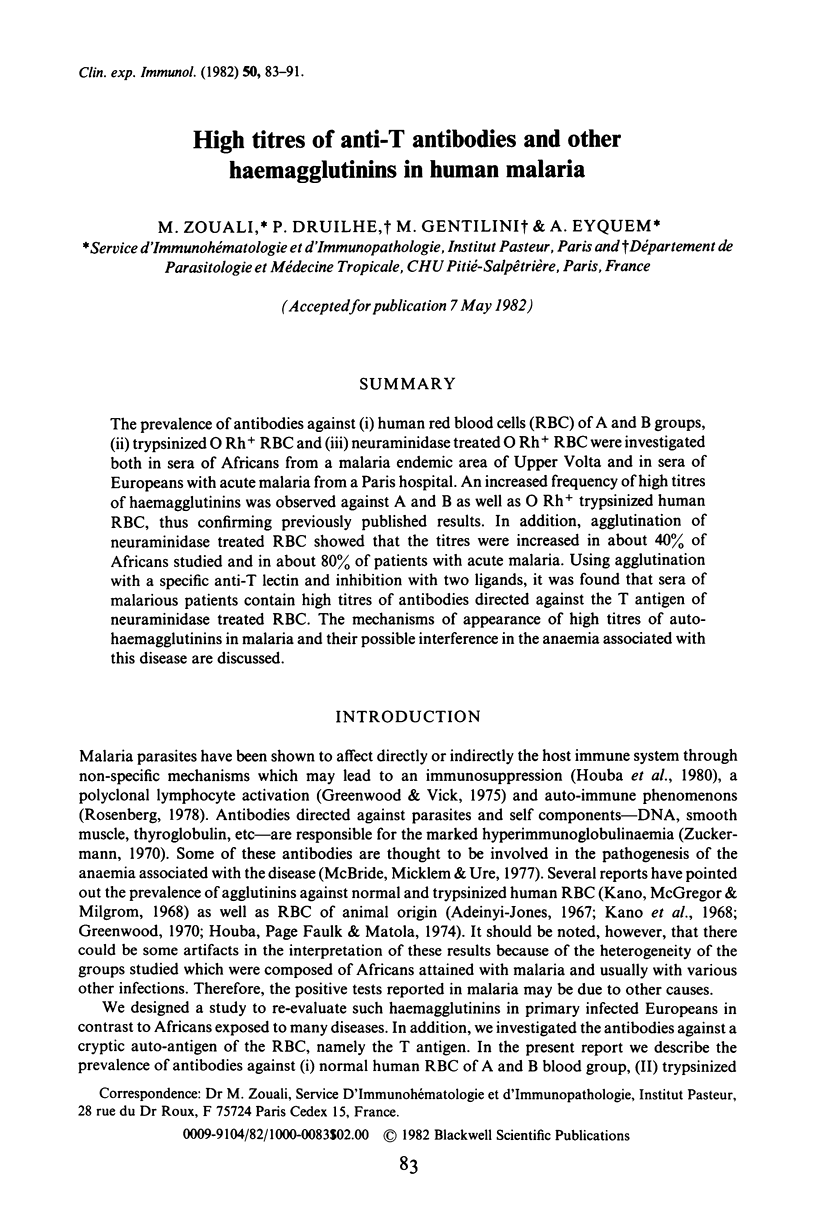
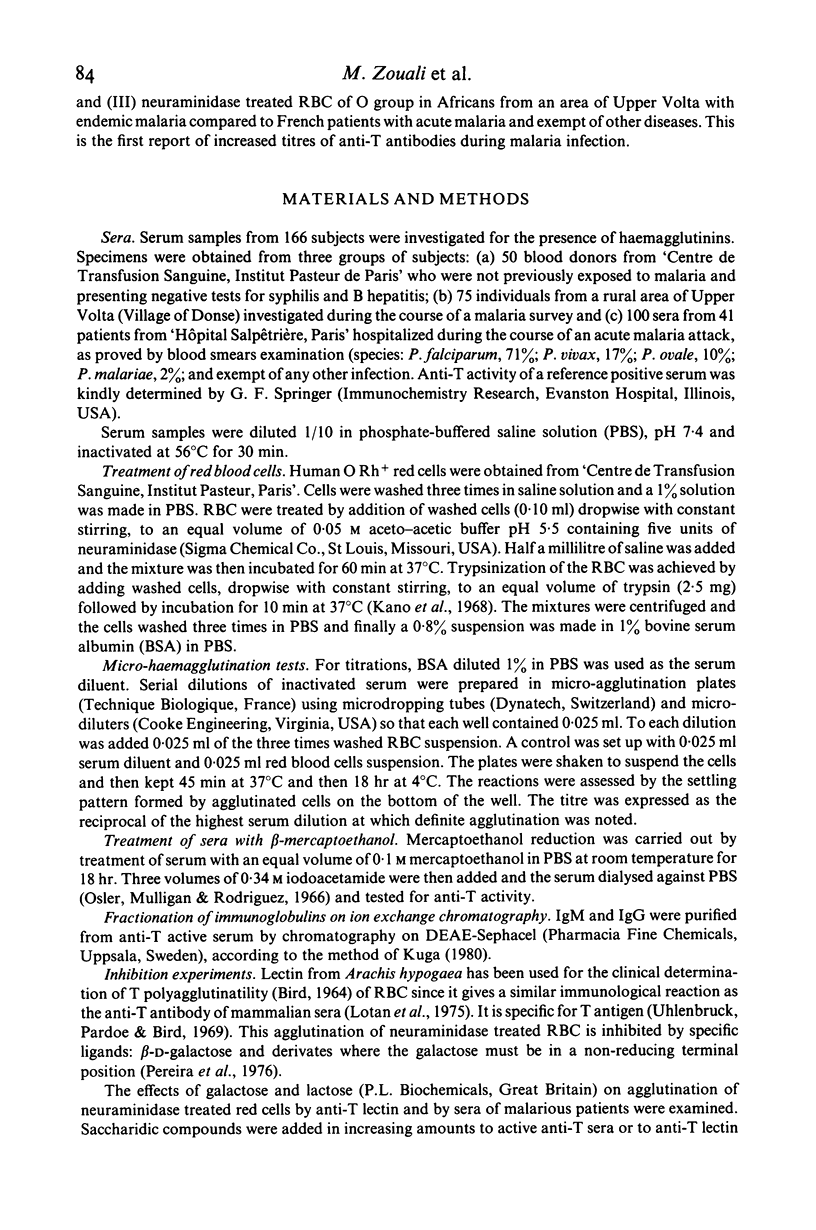
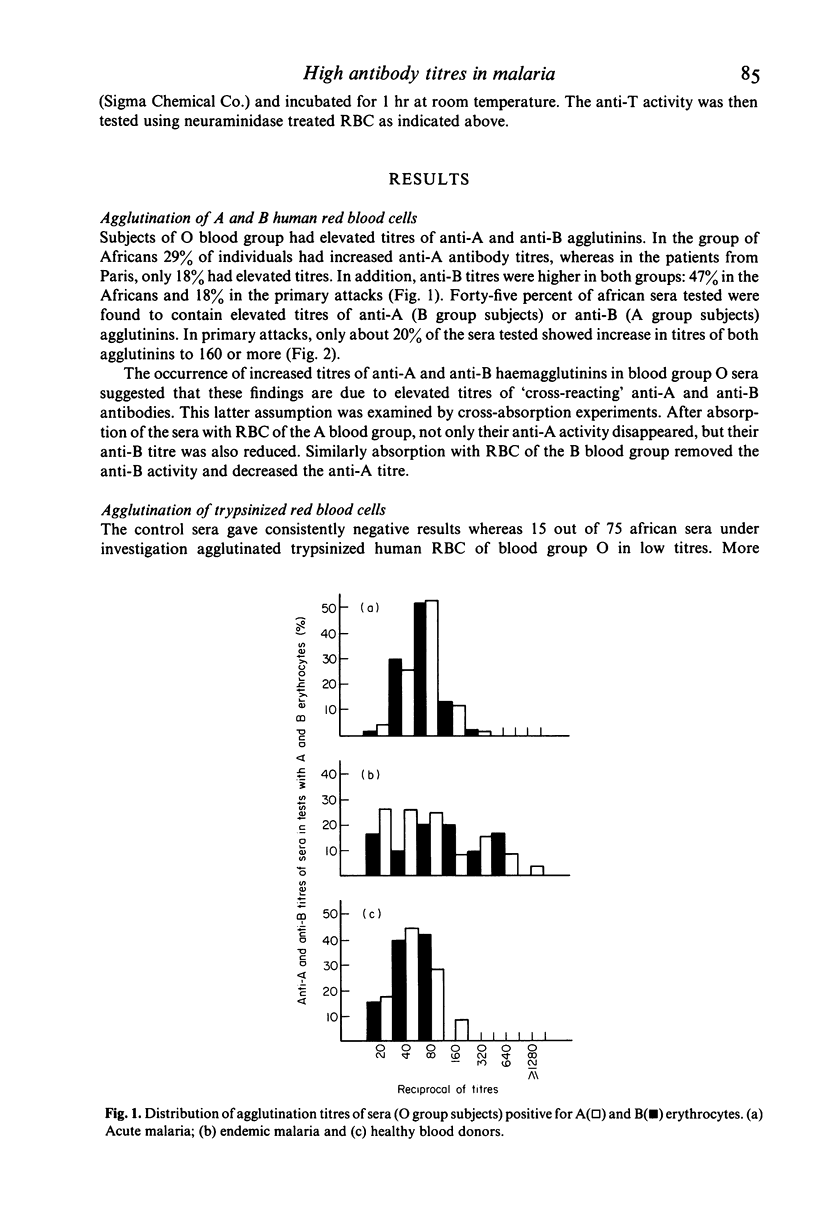
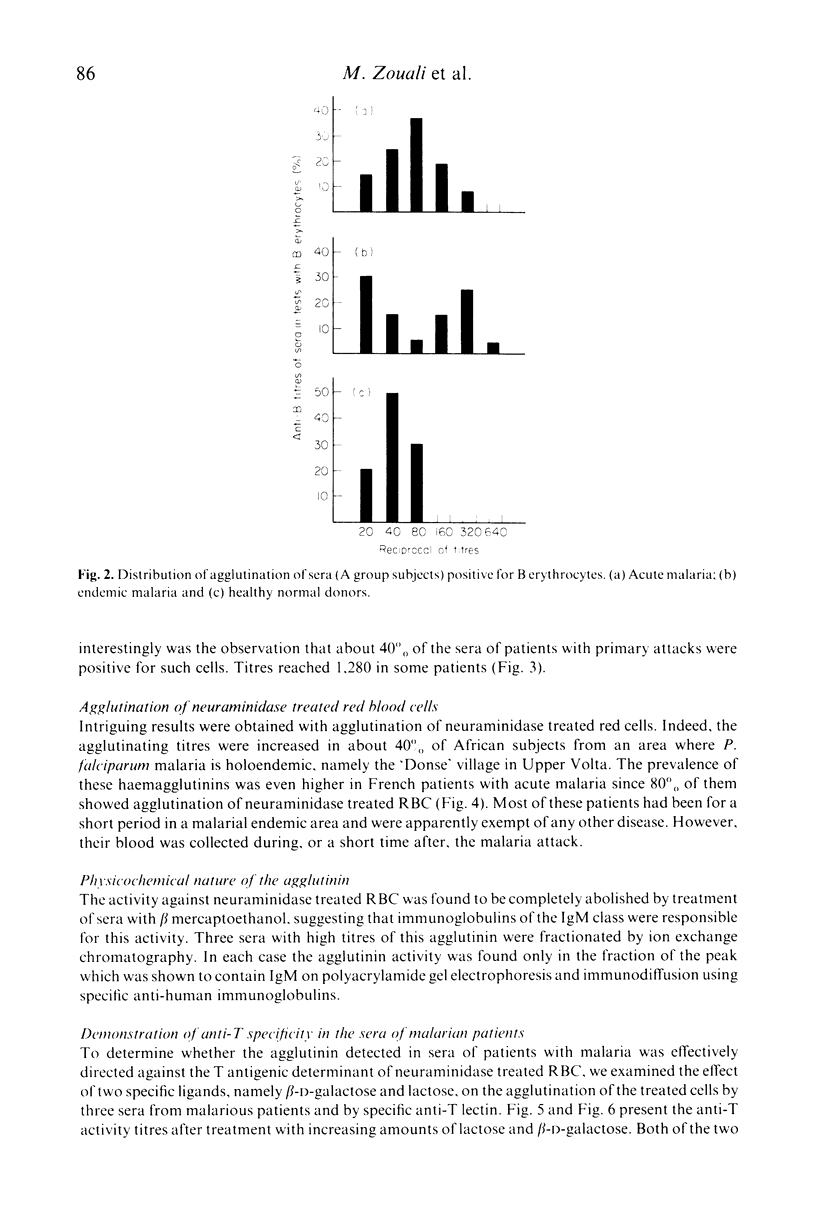
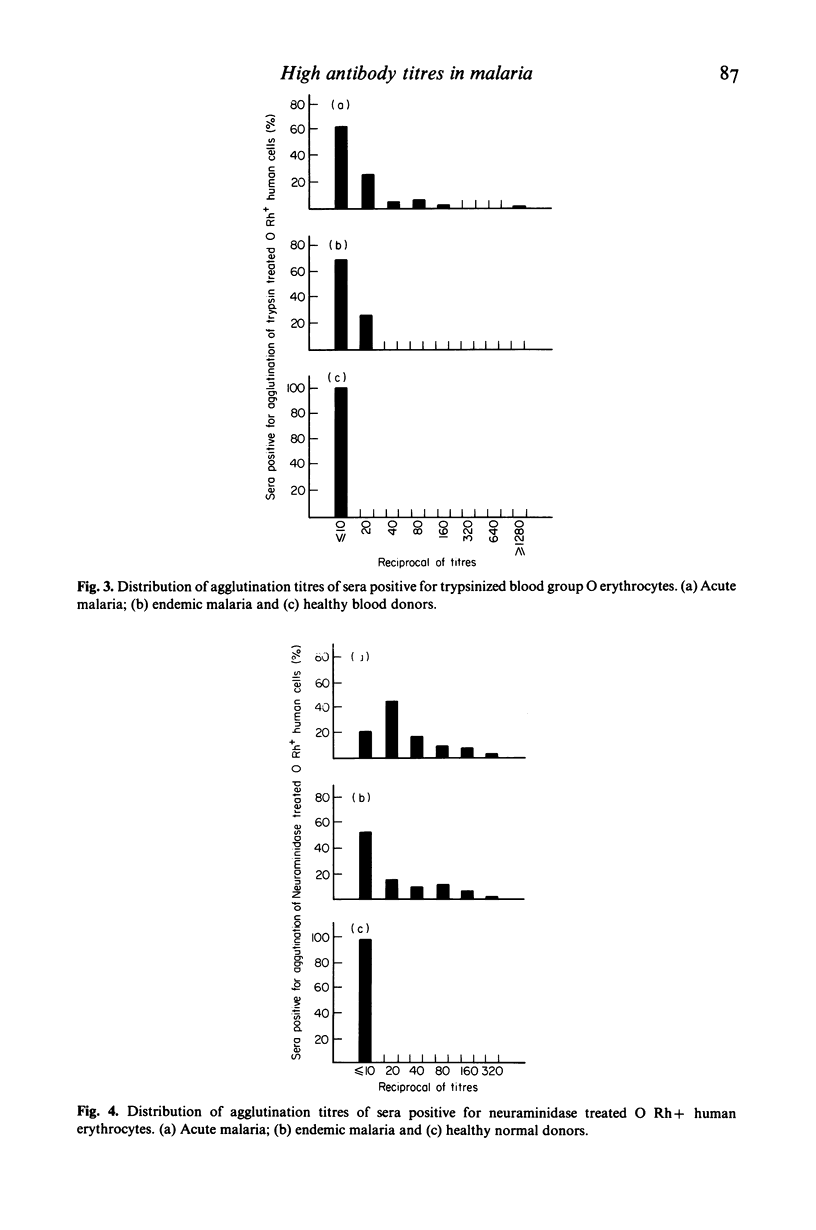
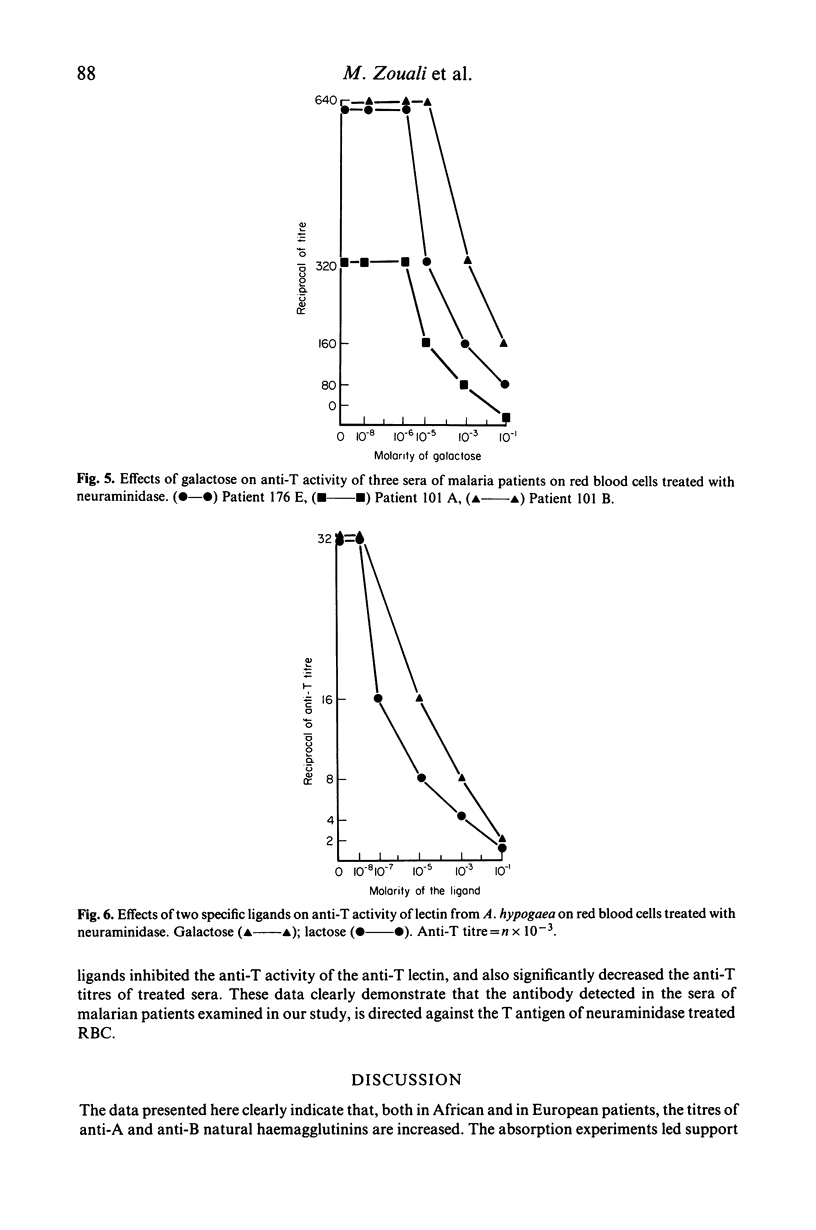
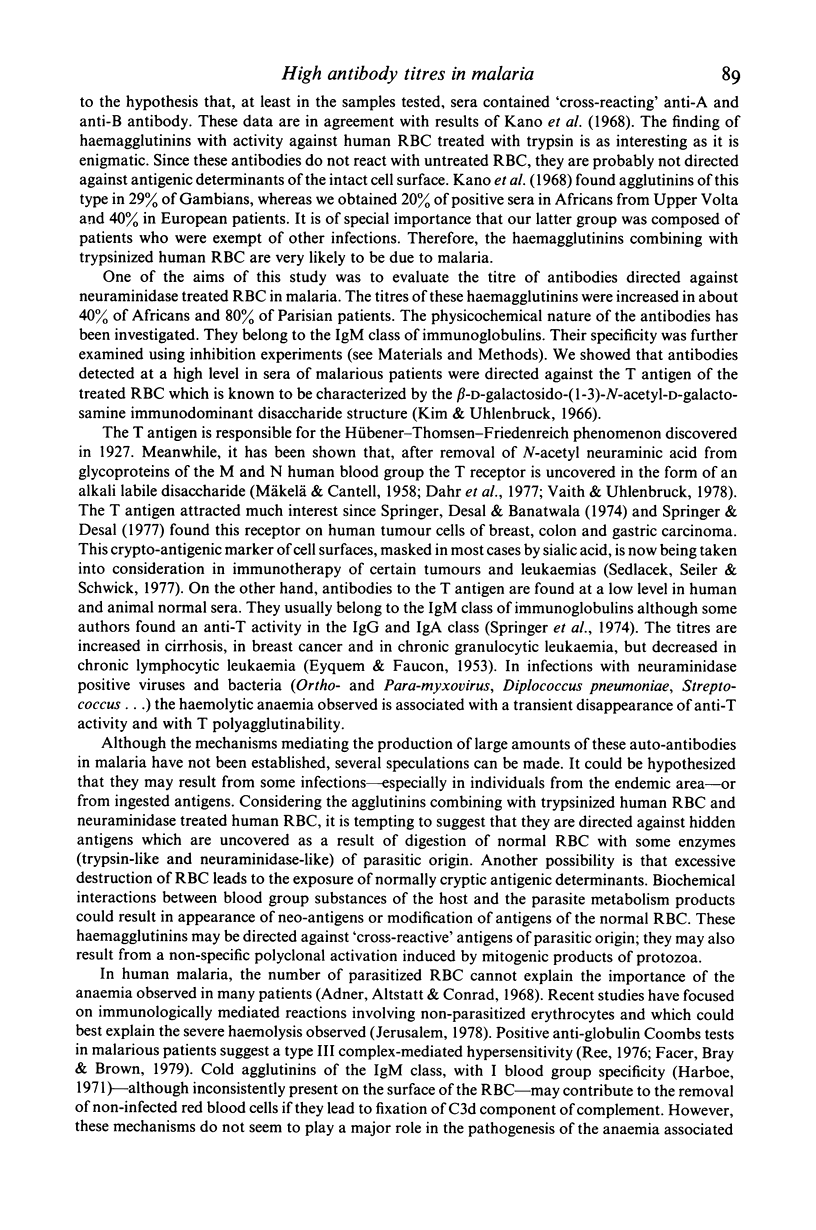
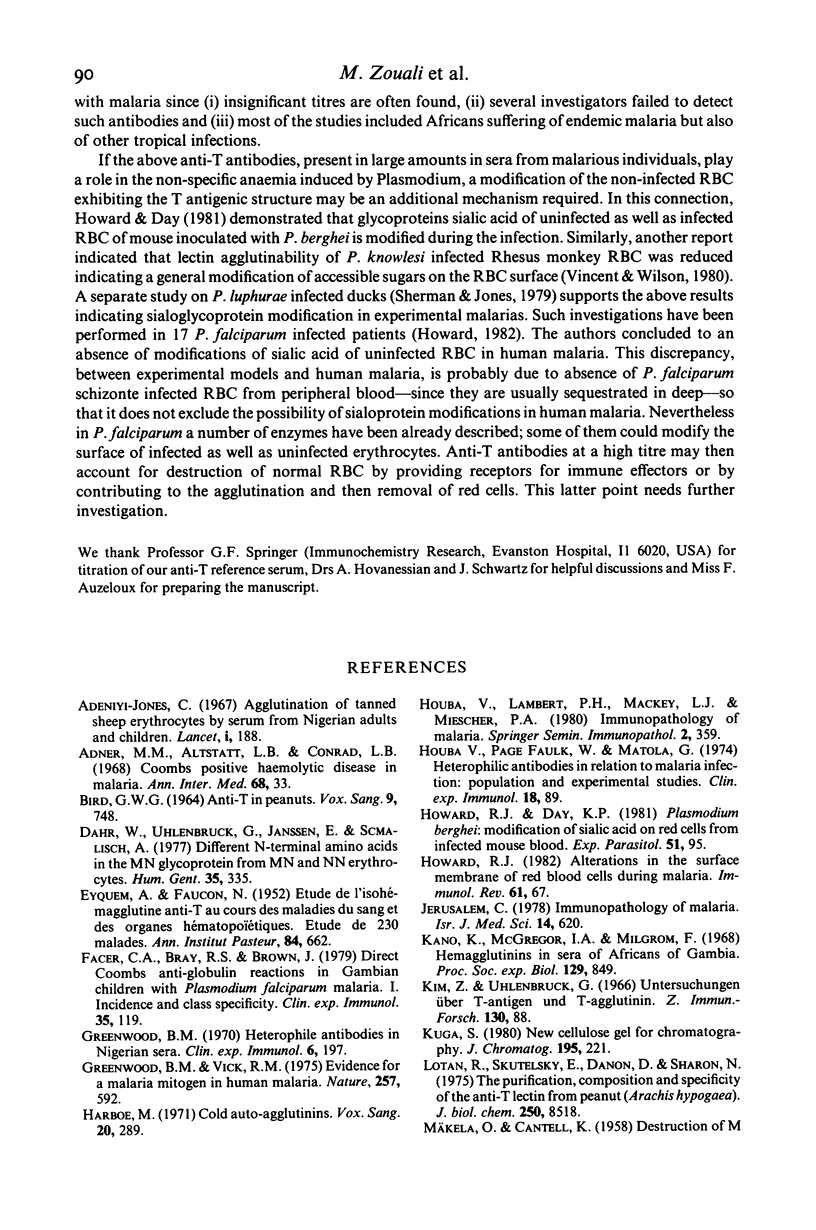
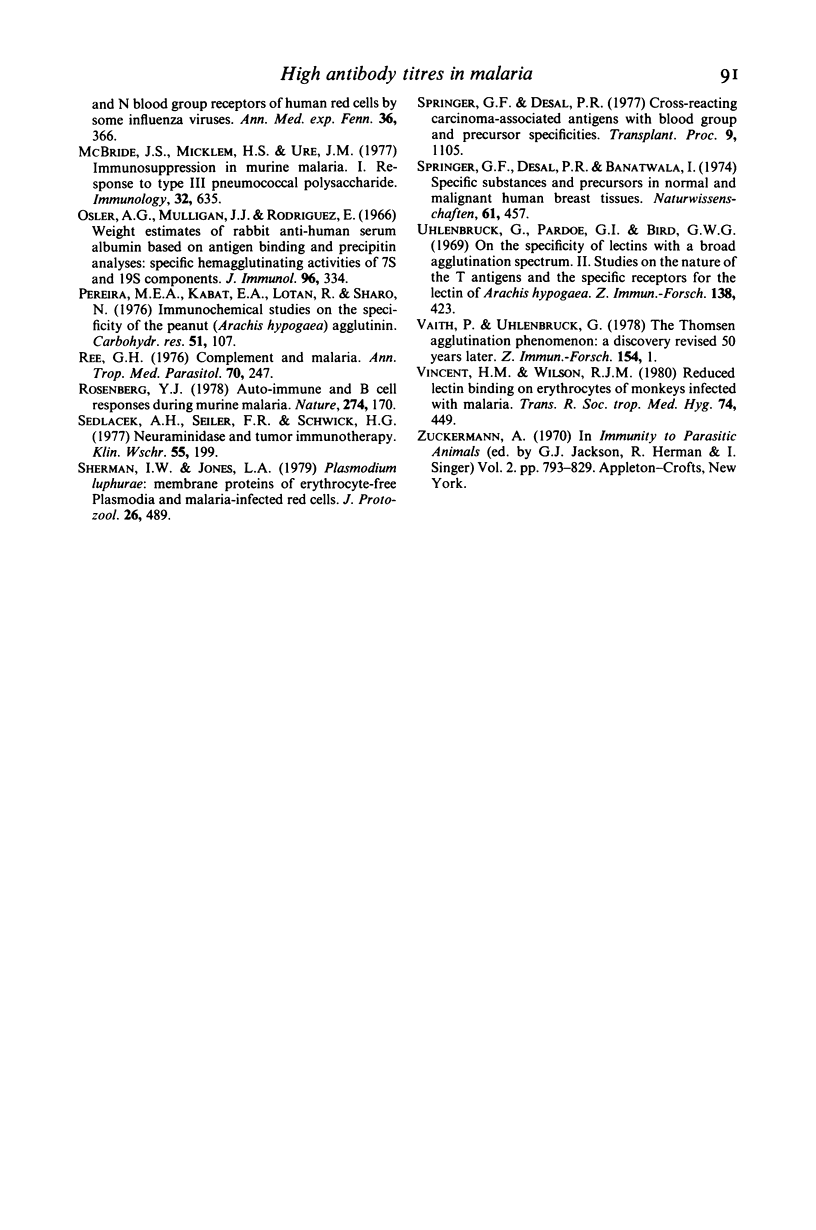
Selected References
These references are in PubMed. This may not be the complete list of references from this article.
- Adeniyi-Jones C. Agglutination of tanned sheep erythrocytes by serum from Nigerian adults and children. Lancet. 1967 Jan 28;1(7483):188–190. doi: 10.1016/s0140-6736(67)91826-0. [DOI] [PubMed] [Google Scholar]
- Adner M. M., Altstatt L. B., Conrad M. E. Coombs'-positive hemolytic disease in malaria. Ann Intern Med. 1968 Jan;68(1):33–38. doi: 10.7326/0003-4819-68-1-33. [DOI] [PubMed] [Google Scholar]
- BIRD G. W. ANTI-T IN PEANUTS. Vox Sang. 1964 Nov-Dec;9:748–749. doi: 10.1111/j.1423-0410.1964.tb04072.x. [DOI] [PubMed] [Google Scholar]
- EYQUEM A., FAUCON N. Etude de l'isohémagglutinine anti-T au cours des maladies du sang et des organes hématopoiétiques; étude chez 230 malades. Ann Inst Pasteur (Paris) 1953 Mar;84(3):662–663. [PubMed] [Google Scholar]
- Facer C. A., Bray R. S., Brown J. Direct Coombs antiglobulin reactions in Gambian children with Plasmodium falciparum malaria. I. Incidence and class specificity. Clin Exp Immunol. 1979 Jan;35(1):119–127. [PMC free article] [PubMed] [Google Scholar]
- Greenwood B. M. Heterophile antibodies in Nigerian sera. Clin Exp Immunol. 1970 Feb;6(2):197–206. [PMC free article] [PubMed] [Google Scholar]
- Greenwood B. M., Vick R. M. Evidence for a malaria mitogen in human malaria. Nature. 1975 Oct 16;257(5527):592–594. doi: 10.1038/257592a0. [DOI] [PubMed] [Google Scholar]
- Harboe M. Cold auto-agglutinins. Vox Sang. 1971 Apr;20(4):289–305. doi: 10.1111/j.1423-0410.1971.tb00447.x. [DOI] [PubMed] [Google Scholar]
- Howard R. J. Alterations in the surface membrane of red blood cells during malaria. Immunol Rev. 1982;61:67–107. doi: 10.1111/j.1600-065x.1982.tb00374.x. [DOI] [PubMed] [Google Scholar]
- Howard R. J., Day K. P. Plasmodium berghei: modification of sialic acid on red cells from infected mouse blood. Exp Parasitol. 1981 Feb;51(1):95–103. doi: 10.1016/0014-4894(81)90046-1. [DOI] [PubMed] [Google Scholar]
- Jerusalem C. Immunopathology of malaria. Isr J Med Sci. 1978 Jun;14(6):620–650. [PubMed] [Google Scholar]
- Kano K., McGregor I. A., Milgrom F. Hemagglutinins in sera of Africans of Gambia. Proc Soc Exp Biol Med. 1968 Dec;129(3):849–853. doi: 10.3181/00379727-129-33440. [DOI] [PubMed] [Google Scholar]
- Lotan R., Skutelsky E., Danon D., Sharon N. The purification, composition, and specificity of the anti-T lectin from peanut (Arachis hypogaea). J Biol Chem. 1975 Nov 10;250(21):8518–8523. [PubMed] [Google Scholar]
- McBride J. S., Micklem H. S., Ure J. M. Immunosuppression in murine malaria. I. Response to type III pneumococcal polysaccharide. Immunology. 1977 May;32(5):635–644. [PMC free article] [PubMed] [Google Scholar]
- Osler A. G., Mulligan J. J., Jr, Rodriguez E. Weight estimates of rabbit anti-human serum albumin based on antigen-binding and precipitin analyses: specific hemagglutinating activities of 7 S and 19 S components. J Immunol. 1966 Feb;96(2):334–344. [PubMed] [Google Scholar]
- Pereira M. E., Kabat E. A., Lotan R., Sharon N. Immunochemical studies on the specificity of the peanut (Arachis hypogaea) agglutinin. Carbohydr Res. 1976 Oct;51(1):107–118. doi: 10.1016/s0008-6215(00)84040-9. [DOI] [PubMed] [Google Scholar]
- Ree G. H. Complement and malaria. Ann Trop Med Parasitol. 1976 Jun;70(2):247–248. doi: 10.1080/00034983.1976.11687118. [DOI] [PubMed] [Google Scholar]
- Rosenberg Y. J. Autoimmune and polyclonal B cell responses during murine malaria. Nature. 1978 Jul 13;274(5667):170–172. doi: 10.1038/274170a0. [DOI] [PubMed] [Google Scholar]
- Sedlacek H. H., Seiler F. R., Schwick H. G. Neuraminidase and tumor immunotherapy. Klin Wochenschr. 1977 Mar 1;55(5):199–214. doi: 10.1007/BF01487712. [DOI] [PubMed] [Google Scholar]
- Sherman I. W., Jones L. A. Plasmodium lophurae: membrane proteins of erythrocyte-free plasmodia and malaria-infected red cells. J Protozool. 1979 Aug;26(3):489–501. doi: 10.1111/j.1550-7408.1979.tb04659.x. [DOI] [PubMed] [Google Scholar]
- Springer G. F., Desai P. R., Banatwala I. Blood group MN specific substances and precursors in normal and malignant human breast tissues. Naturwissenschaften. 1974 Oct;61(10):457–458. doi: 10.1007/BF00597216. [DOI] [PubMed] [Google Scholar]
- Springer G. F., Desai P. R. Cross-reacting carcinoma-associated antigens with blood group and precursor specificities. Transplant Proc. 1977 Mar;9(1):1105–1111. [PubMed] [Google Scholar]
- Uhlenbruck G., Pardoe G. I., Bird G. W. On the specificity of lectins with a broad agglutination spectrum. II. Studies on the nature of the T-antigen and the specific receptors for the lectin of Arachis hypogoea (ground-nut). Z Immunitatsforsch Allerg Klin Immunol. 1969 Nov;138(5):423–433. [PubMed] [Google Scholar]
- Vincent H. M., Wilson R. J. Reduced lectin binding on erythrocytes of monkeys infected with malaria. Trans R Soc Trop Med Hyg. 1980;74(4):449–451. doi: 10.1016/0035-9203(80)90051-6. [DOI] [PubMed] [Google Scholar]


